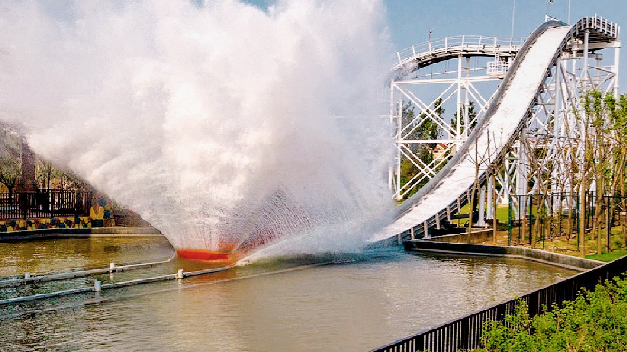- Albanian
- Arabic
- Belarusian
- Bengali
- Czech
- English
- French
- German
- Hebrew
- Hungarian
- Indonesian
- irish
- Italian
- Japanese
- kazakh
- Persian
- Russian
- Thai
- Uzbek
- Vietnamese
Exploring the Mathematical Equations Behind Roller Coaster Designs and Trajectories
Understanding Roller Coaster Graph Equations A Mathematical Ride
Roller coasters are thrilling attractions that combine physics, engineering, and mathematics to deliver an exhilarating experience. Among these mathematical concepts, graph equations play a significant role in designing roller coasters. Understanding how these equations work helps us appreciate both the thrill of riding and the art of crafting each twist, turn, and drop.
At the core of roller coaster design is the relationship between height, velocity, and acceleration as the coaster navigates through its track. The path of a roller coaster can be modeled using various mathematical functions, most commonly quadratic and cubic equations. These functions allow engineers to predict the shape of the track and how the coaster will behave at different points along its journey.
The Basics of Graphing a Roller Coaster
To begin with, consider the basic components of a roller coaster track—inclines, declines, loops, and twists. These can be represented using different types of equations. For instance, a simple hill can be described by a parabolic function, such as \( y = ax^2 + bx + c \). Here, \( y \) represents the height of the coaster at any point \( x \), while \( a, b, c \) are constants that determine the shape of the parabola.
As the coaster ascends, its potential energy increases, while its kinetic energy remains low, resulting in a slower speed at the peak. However, as the coaster descends, that potential energy is converted into kinetic energy, causing the ride to gain speed. This conversion can be modeled using equations that describe energy conservation, illustrating the inverse relationship between height and speed.
Acceleration and the Thrill Factor
roller coaster graph equations

Acceleration is another essential aspect of roller coaster design, impacting passenger comfort and safety. Engineers must carefully calculate the g-forces experienced by riders, which can be modeled using derivatives of the position function. For example, if height \( h(t) \) is expressed as a function of time \( t \), the velocity \( v(t) \) is given by \( v(t) = \frac{dh}{dt} \) and the acceleration \( a(t) = \frac{dv}{dt} \).
Cubic functions may come into play when modeling more complex elements like loops and corkscrews. A function such as \( y = ax^3 + bx^2 + cx + d \) allows for a more intricate shape that can smoothly transition through these exciting features. Operators in calculus help ensure that the transitions are not abrupt, maintaining a pleasant experience for riders. Sudden steep drops or changes in direction can lead to discomfort or even injury, which is why careful planning through these equations is paramount.
Safety and Regulations
Roller coasters are subject to strict safety regulations, which are often enforced through mathematical analysis. For instance, engineers must ensure that the maximum acceleration does not exceed safe limits, typically around 4-6 g’s. This safety threshold can be integrated into the design process using the principles derived from the graph equations discussed earlier.
Moreover, graph equations help determine the load distribution across different parts of the coaster, ensuring that structural integrity is maintained throughout its operation. By modeling the coaster’s dynamics, engineers can simulate various scenarios, allowing them to make adjustments before physical construction begins.
The Thrill of Mathematics
In conclusion, while roller coasters are often seen as sheer adrenaline machines, there is a profound mathematical foundation that underpins their design. From basic parabolic equations that outline gentle hills to complex cubic equations that depict challenging loops, graph equations are essential in ensuring that roller coasters deliver not just thrills but also safety. Understanding these equations enhances our appreciation for the ride, illustrating that behind every twist and turn, there lies a world of mathematical wonder waiting to be explored. So, the next time you buckle up for a roller coaster adventure, take a moment to appreciate the math that makes it all possible.
-
Flume Ride-Hebei Zhipao Amusement Equipment Manufacturing Co., Ltd.|Thrilling Water Attraction&Customizable DesignJul.30,2025
-
Flume Ride - Hebei Zhipao Amusement Equipment | Water Coaster, Thrilling DescentJul.30,2025
-
Flume Ride - Hebei Zhipao | Thrilling Water AttractionJul.30,2025
-
Flume Ride: Thrilling Water Attraction by Hebei Zhipao|Log Flume Manufacturers&Flume Ride DesignJul.30,2025
-
Flume Ride-Hebei Zhipao Amusement Equipment Manufacturing Co., Ltd.|Thrilling Water Coaster, Safe DesignJul.30,2025
-
Flume Ride-Hebei Zhipao Amusement Equipment Manufacturing Co., Ltd.|Thrilling Water Attraction, Safe DesignJul.30,2025
